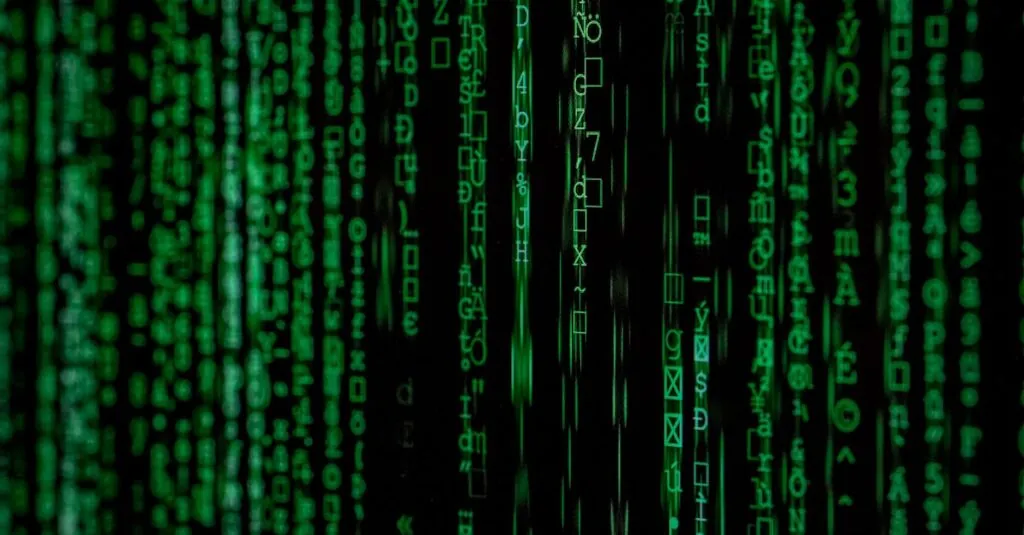Table of Contents
ToggleImagine a world where your vote isn’t just a drop in the bucket but a digital fortress, guarded by the impenetrable walls of blockchain technology. Gone are the days of hanging chads and mysterious ballot boxes. With blockchain, voting becomes as secure as your grandma’s secret cookie recipe, ensuring every vote counts and every voter feels heard.
Overview of Blockchain Technology
Blockchain technology offers a secure and transparent approach to various applications, including voting. The decentralized nature of this technology addresses traditional electoral issues effectively.
Definition and Structure
Blockchain represents a series of interconnected records or blocks that store data securely. Each block contains transaction information, a timestamp, and a cryptographic link to the previous block. This structure forms a trusted chain resistant to tampering. Typically, multiple users share access to the blockchain, promoting transparency and accountability in data management.
Key Features and Benefits
Blockchain technology provides several key features that enhance the electoral process. Security stands out as votes are encrypted, protecting them from unauthorized access. Transparency allows stakeholders to verify the integrity of the voting process, fostering trust. Immutability ensures that once a vote is recorded, it cannot be altered or deleted. Through efficient tracking, blockchain simplifies auditing, offering real-time accountability and reducing the likelihood of fraud in elections.
Current Voting Systems
Voting systems play a crucial role in democratic processes. They vary in execution and technology, with traditional and digital methods being the most common.
Traditional Voting Processes
Traditional voting processes often involve in-person casting of ballots. Polling places typically operate on designated days, requiring voters to provide identification. Election workers oversee these sites, ensuring a secure environment. In many instances, paper ballots create challenges like misinterpretation and procedural errors. Security concerns arise due to issues such as ballot tampering and intimidation. Overall, this method, though time-tested, faces significant obstacles that undermine public confidence.
Digital Voting Systems
Digital voting systems utilize technology to enable remote voting, increasing accessibility. Online platforms streamline the voting experience, allowing users to cast votes from their devices. Security measures, however, remain a primary concern, as cyberattacks can compromise integrity. Many jurisdictions have adopted electronic machines to enhance efficiency while still facing scrutiny. Voter verification processes aim to ensure authenticity but sometimes lead to confusion. These systems continue to evolve as advancements in technology and security practices emerge.
Blockchain Technology for Voting
Blockchain technology offers a secure and transparent solution for the voting process. By underpinning electoral systems, it addresses critical security and integrity concerns.
How It Works
Blockchain operates on a decentralized network, maintaining an immutable ledger of votes. Each transaction is encrypted and time-stamped, making it easy to track. When a vote is cast, it gets recorded in a new block that links to the previous block, ensuring a chronological history. This structure prevents alterations, making it nearly impossible to tamper with votes. Voter anonymity is maintained, as identities are encrypted while allowing verification. Overall, this technology promotes trust among voters, ensuring that every ballot is accounted for.
Use Cases in Elections
Various countries have begun leveraging blockchain for electoral purposes. In Estonia, citizens utilize blockchain-based systems for secure online voting. This initiative allows voters to cast their ballots from anywhere while ensuring the integrity of the process. The U.S. state of Utah pilots blockchain in municipal elections, enhancing voter accessibility and reducing administrative errors. Additionally, Switzerland tests blockchain-based voting in pilot projects, focusing on transparency and security. These applications illustrate how blockchain can modernize elections, promoting confidence and engagement among voters.
Advantages of Blockchain Voting
Blockchain voting offers several significant advantages that enhance the electoral process. These benefits include improved security, transparency, and increased voter accessibility.
Security and Transparency
Security remains a top priority in any voting system. Blockchain’s decentralized structure secures votes through encryption, making tampering nearly impossible. Every vote becomes part of an immutable ledger, ensuring it cannot be altered after submission. This immutable nature builds trust among voters, as they can verify that their votes were counted accurately. Transparency further enhances this trust, as stakeholders can independently verify election results through accessible blockchain data. Overall, these features significantly reduce the potential for fraud and ensure the integrity of the electoral process.
Voter Accessibility and Engagement
Accessibility is a crucial factor in encouraging voter participation. Blockchain voting allows individuals to cast their votes remotely, breaking down geographical barriers. This remote voting capability caters to those with disabilities, lack of transportation, or conflicting schedules. Engaged voters appreciate the convenience of participating in elections from anywhere, promoting higher turnout rates. Enhanced accessibility can also involve multilingual interfaces, ensuring that language differences do not prevent someone from exercising their democratic rights. As a result, blockchain technology can foster a more inclusive electoral experience for all citizens.
Challenges and Limitations
Blockchain voting faces several challenges and limitations that must be addressed for successful implementation.
Technical and Infrastructure Issues
Technical challenges frequently hinder the deployment of blockchain voting systems. Scalability becomes a concern as voter turnout increases, with existing systems potentially struggling to process a high volume of transactions simultaneously. Network reliability is crucial; any downtime can undermine confidence in the electoral process. Moreover, interoperability with current voting systems is essential. Without seamless integration between new blockchain solutions and traditional election infrastructures, complications during voting may arise. Security remains a priority, as even blockchain isn’t immune to vulnerabilities. Ensuring that the network remains resistant to attacks is imperative for maintaining voter trust.
Legal and Regulatory Concerns
Legal challenges significantly impact the adoption of blockchain voting. Voter privacy laws vary across jurisdictions, leading to complex compliance requirements. Regulations may not accommodate blockchain’s decentralized nature, complicating its implementation. Additionally, establishing a clear, enforceable framework surrounding blockchain voting is necessary. Uncertainties regarding liability in the event of an error or fraud must be addressed to prevent legal disputes. Furthermore, public acceptance requires transparency in regulations, allowing voters to understand how their votes are managed. Achieving consensus among lawmakers and regulators is crucial for legitimizing blockchain as a viable voting method.
The potential of blockchain technology to transform voting processes is immense. By enhancing security and transparency it promises to rebuild trust in electoral systems. Voters can feel confident knowing their voices are accurately represented without the fear of tampering or fraud.
As the technology continues to evolve it’s essential for stakeholders to address the challenges that come with it. Collaboration among lawmakers technologists and the public will pave the way for a more inclusive and efficient voting experience. Embracing blockchain could very well be the key to unlocking a brighter future for democratic participation.




